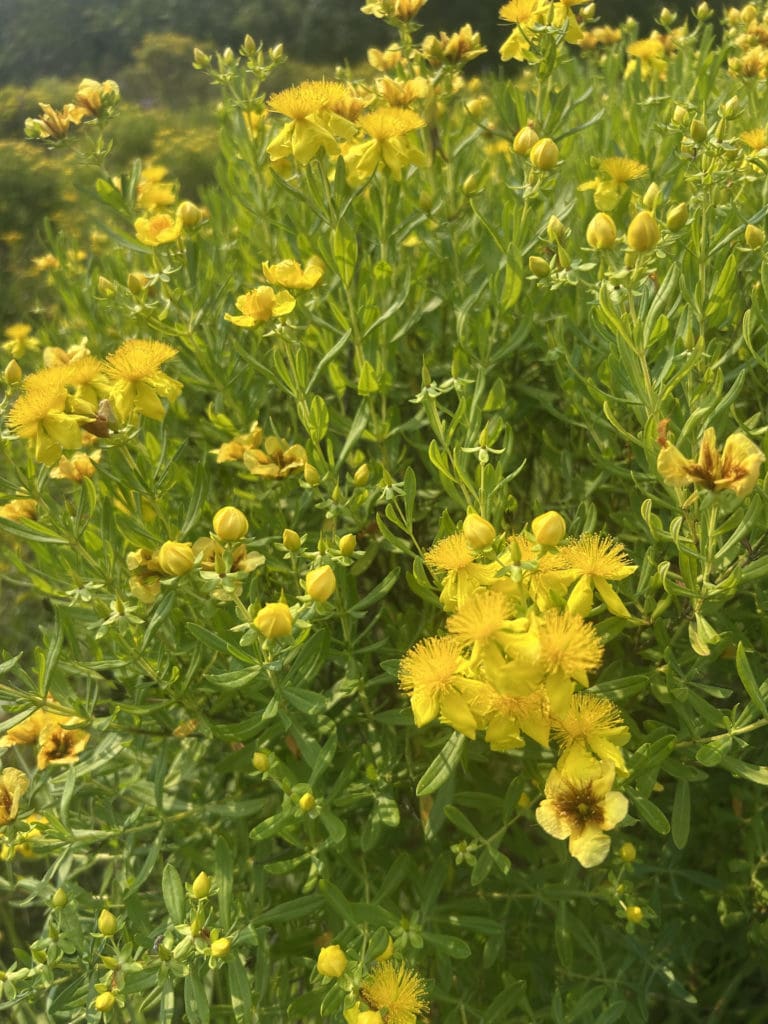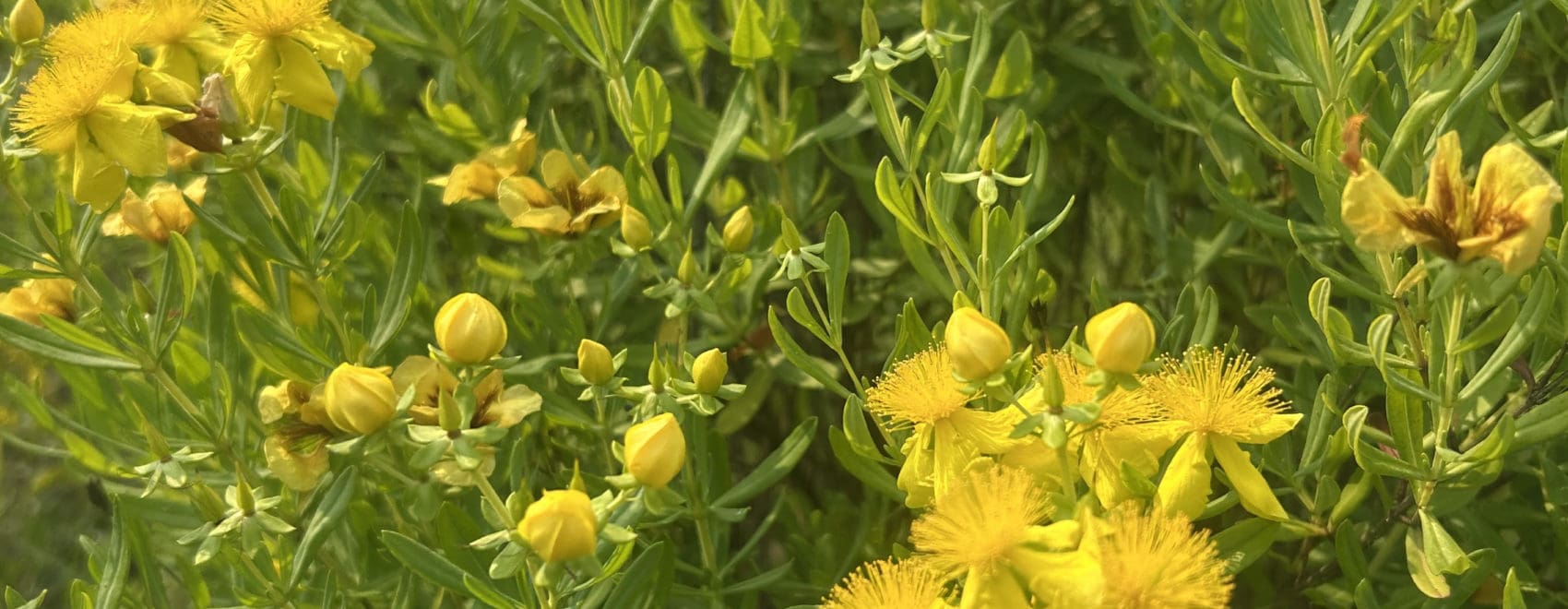Written by Max Kornetzke

Mid-July through early August is a great time to take a walk down our Willow Trail here at Woodland Dunes. As you walk back you will encounter a section of prairie that is buzzing with pollinators and different shades of yellow, purple, white and orange. One of the most notable plants in this section is a small native shrub called Kalm’s St John’s Wort (Hypericum kalmianum).
Kalm’s St John’s Wort is a native shrub endemic to the Great Lakes region, meaning it’s only found naturally occurring in those areas. Its foliage is a beautiful shade of blue-green, and its lower branching has a shedding texture of reddish brown, similar in look to ninebark branches. The flowers are large, very showy, bright yellow and profuse all over the shrub. The flowers have five petals and dozens of stamens bursting from the center of the flower like fireworks.
These flowers are primarily pollinated by our native bees who roll around in the stamens collecting their pollen before carrying onto the next specimen. It’s wonderful to just stop and watch them fly around, enjoying themselves amongst these beautiful plants.
Later in the season, after the petals fall away, distinct green seedpods will form in their place. As fall creeps in, the pods will begin to turn shades of red and purple and finally black. The color of the foliage is also transformed by the cool fall weather into similar shades of red, purple and bronze with hints of green persisting. When winter arrives, the leaves never seem to truly fall, giving this plant intriguing texture throughout all seasons.
In our landscape, it is underused, but I believe it has much potential. It prefers medium to moist soils that are well draining, and would make a lovely small hedge. It also looks great massed and mixed with perennials like blazing stars, culvers root and butterfly weed. Seeds are available from various native plant nurseries online and our native bees will thank you for this addition in your garden.

